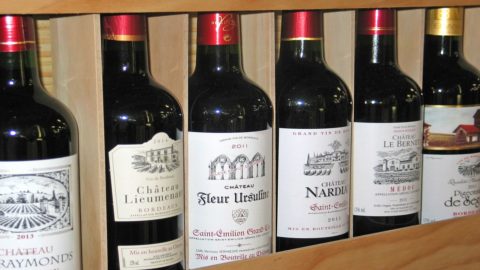The Germans are increasingly "parochialists", even in the choice of premium wines. But if they drink foreign la France beat Italy. A figure that alarms the great Italian wine producers given that Germany, after the USA and Great Britain, is the third most important market for our country. For this reason, the Istituto del Vino Italiano di Qualità Grandi Marchi has decided to commission the Nomisma Wine Monitor Observatory to carry out the study “Trends and prospects for Italian fine wines in German catering”, presented in Rome. Of the 2,5 billion euros of wine imported into Germany in 2017, 36% is Made in Italy. And if in the last five years, in line with the general trend, bottled still wines from Italy have dropped in volume by 10%, they have nevertheless recorded an almost equivalent growth in value (+9,8%), "as proof – specifies the report Nomisma – of an evident qualitative repositioning in a country which, for its part, is rediscovering a predilection for local wines, headed by whites''.
Under the lens ofWine Monitor Observatory 200 restaurants (of which 78% medium-high range) reported by the main sector guides and a sample of 1000 consumers who normally drink wine away from home were placed. Two lines of investigation from which it emerges that 34% of restaurants choose the wines to include in the menu mainly on the basis of their German origin, 33% on the basis of the popularity of the grape variety and 23% on the basis of the brand's notoriety. While consumers for the purchase of premium wines at the restaurant (price per bottle above 30 euros for whites and 40 euros for reds) follow the criterion of the type (23%) and that of the production area (21%) with Germany, France and Italy in the lead.
'
“In the last five years – explains the manager of Nomisma Wine Monitor Denis Pantini – we are witnessing a drop in consumption levels (-1,5%) which risks becoming structural for various reasons. First of all, the lack of generational replacement among the consumers themselves. As with the Italian market, the aging German population is increasing and, as a result, drinks less, while the younger ones prefer beer, approaching wine at a more mature age. To this must be added the rediscovery of local wines, which is pushing the consumer to look less and less at foreign products. Not by chance, while the import of bottled wines drops by more than 4% in volume, the consumption of German wine between 2012 and 2017 grew by 3%. Then there is a third reason linked instead to the perception of Italian wine: for many of the interviewees, the made in Italy wines offered by restaurants show rising prices that are not justified by increases in quality or linked to innovation. It goes without saying therefore that 53% of restaurateurs (63% of the high-end ones) declare that they have increased the sales of German wines, despite the fact that Italians are the most widespread in the wine lists (88% of the establishments have them on their menu interviewed)".
According to the survey, therefore, it is the Germans, including premiums, who excel in terms of perceived quality level (35% of preferences), followed by the French (33%) and far behind the Italians (14%). An evaluation that also finds correspondence in the respective levels of consumption. But according to the restaurateurs, the desire of customers to drink less and less wines from other countries, including Italy, mainly depends on the lack of knowledge. Therefore, both for restaurateurs and for the consumers questioned, the organization of events and tastings is strategic, even if the proposal to include brands that are not simultaneously found in supermarkets on the menu is at the top of the priorities expressed by 35% of the restaurants monitored . However, it should not be forgotten that in Germany over 80% of the wines are sold in off-trade channels, discount primarily.
“For some time – declares Piero Mastroberardino, president of the Istituto del Vino Italiano di Qualità Grandi Marchi, which brings together nineteen of the most important wineries in the Belpaese – we have felt this gap and the Wine Monitor survey provides us with unequivocal confirmation of the fact that it is necessary work increasingly on promotion, with targeted actions on catering, which in fact represents the main sales channel of fine wines in Germany. In recent years we have already organized various initiatives in Berlin, Hamburg, Cologne and Munich, but it is clear that we need to intensify our efforts, because the German consumer needs to know our great variety and the different territories to which we belong''.
A strategy that, however, must be implemented quickly if we want to seize the opportunities that Wine Monitor highlights in the next two-three years when, according to 24% of the restaurants questioned, the total wine labels on the menu will increase: mostly German wines (35% of the sample), but also of Italian wines (12% of the sample).





